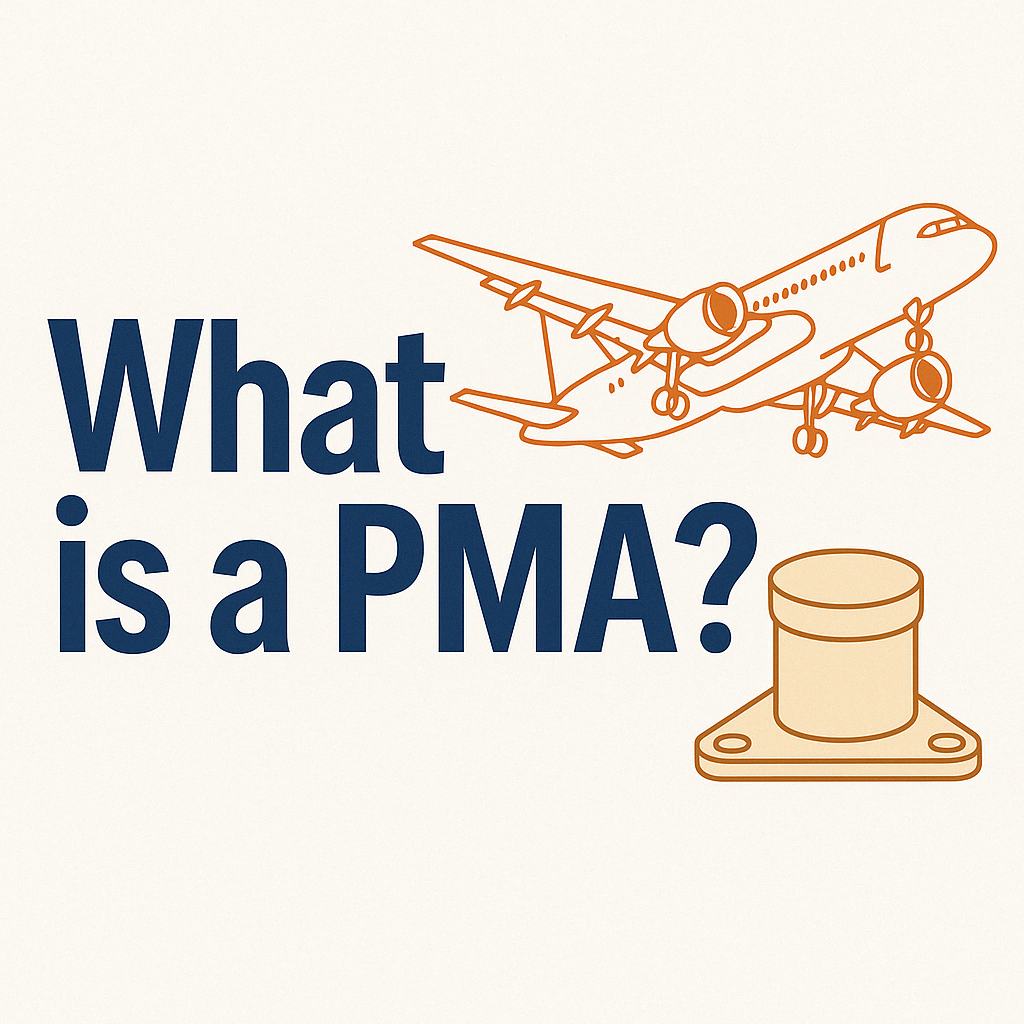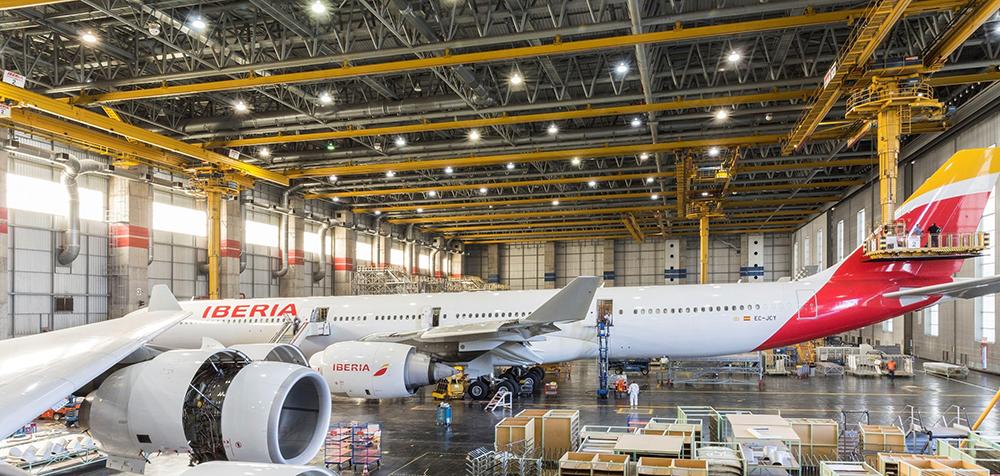
Working as an aircraft engineer and collaborating closely with systems experts, I frequently encounter discussions about the trade-offs between cost, certification, and reliability in aircraft operations.
One topic that often comes up is the use of PMA (Parts Manufacturer Approval) parts an alternative to OEM components that raises both technical and strategic considerations.
In an industry where optimizing costs without compromising airworthiness is a daily challenge, understanding the role of PMA parts has become increasingly important whether you’re in engineering, maintenance, procurement, or leasing.
Understanding the Basics: What Are PMA, OEM, and TSO Parts?
In aviation, not all spare parts are created equal. Depending on their origin and certification, they fall under different categories: OEM (Original Equipment Manufacturer), PMA (Parts Manufacturer Approval), and TSO (Technical Standard Order). Understanding the differences is essential for making the right operational and financial decisions.
OEM (Original Equipment Manufacturer) Parts
OEM parts are the components originally designed and manufactured by the aircraft or engine maker companies like Airbus, Boeing, or CFM International. These parts are certified through the original Type Certificate of the aircraft, and they come with full compatibility, traceability, and warranty.
Operators tend to favor OEM parts for their proven performance and ease of approval by lessors and aviation authorities. However, this peace of mind comes at a premium. OEM parts are often significantly more expensive and may be subject to longer lead times, especially in periods of global supply chain stress.
PMA (Parts Manufacturer Approval) Parts
PMA parts are components produced by manufacturers other than the OEM but certified by the FAA to meet or exceed the performance of the original. To obtain PMA certification, manufacturers must go through one of three approval paths: licensing agreement with the OEM, identicality (through reverse engineering), or test and computation.
PMA parts offer a cost-effective and often faster alternative to OEM spares. In many cases, their quality is equal or superior, as the FAA imposes rigorous controls. Still, some operators and lessors remain cautious, especially for critical systems like engines or avionics, due to resale value concerns and contract limitations.
TSO (Technical Standard Order) Parts
TSO-approved parts meet specific FAA technical standards for design and performance. Unlike PMA parts, which are approved for specific aircraft, TSO parts are more modular and used across multiple platforms (e.g., altimeters, oxygen masks, emergency beacons). A part with a TSO does not automatically mean it’s installable it still requires further approval (like STC (Supplemental Type Certificate) or installation approval from the operator or OEM).
TSO parts are particularly common in avionics and cabin safety equipment. They combine the benefits of standardization and performance assurance but may not always be cost-competitive depending on the component.

Why Operators Choose PMA (or Avoid It): Cost vs Trust
While PMA parts offer clear economic advantages, the decision to use them is rarely black and white. Airlines, MROs, and leasing companies must weigh multiple factors including cost savings, operational risk, contract constraints, and long-term asset value.
On one hand, PMA parts can reduce parts procurement costs by up to 30–40% compared to OEM equivalents. This is particularly attractive for high-volume consumables and components with short life cycles. The FAA’s rigorous certification process gives operators confidence that safety and reliability are not compromised. In fact, in some cases, PMA manufacturing standards exceed those of OEMs, thanks to modernized processes and tighter quality control.
On the other hand, many aircraft lessors and financing institutions remain cautious. They often restrict the use of PMA parts on high-value assets like engines and avionics, citing concerns about residual value and asset re-marketability. For airlines operating leased fleets, this can limit the ability to freely install PMA components unless specifically approved by the lessor.
Company policy also plays a key role. Maintenance Control Manuals (MCM), Maintenance Organization Expositions (MOE), and lease agreements often outline the evaluation procedures required before a PMA part can be installed. This includes engineering assessments, risk analyses, and verification of documents like the FAA Form 8130-3, particularly Block 12, which must state that the part is non-critical and clearly reference the PMA authorization.

TSO vs PMA vs OEM: What to Use When?
The choice between OEM, PMA, and TSO parts is not always dictated by cost or regulation alone it’s about context. Each part type has its ideal use case depending on the aircraft system, maintenance strategy, and business model.
OEM parts are preferred for engines, avionics, and high-value systems, especially on leased aircraft where residual value and lessor approval matter most. They are also common in warranty-covered fleets and for operators who want to avoid any potential disputes.
PMA parts are ideal for non-critical components, such as cabin parts, brackets, airframe fasteners, and interior elements especially where cost reduction and quick availability are priorities. Operators with more control over their fleets (non-leased or end-of-life aircraft) often use PMA parts more freely.
TSO parts fit naturally in standardized systems, like emergency lighting, seats, oxygen systems, and avionics modules. They offer interoperability and are widely accepted due to their design-based certification.
In short: OEM for peace of mind, PMA for cost and efficiency, TSO for interoperability and flexibility.
The smart choice depends on balancing safety, compliance, and economics.
Conclusion: Choosing Smart, Not Just Safe
As someone working in the aerospace industry, I’ve come to realize that parts management is no longer just a technical task it’s a strategic lever.
OEM parts bring the comfort of tradition and universal acceptance. PMA parts offer agility, cost-efficiency, and a push toward more competitive maintenance. TSO parts provide the standardization needed in a multi-platform world. None of them is inherently “better” what matters is how and when you use them.
In 2025, as aircraft systems get more connected and data-driven, the ability to balance cost, compliance, and operational impact is what will set great engineering teams apart. Understanding the real-world implications of each certification path is not just useful it’s essential.
So next time you’re faced with a sourcing decision, ask yourself not just “what’s certified?” but “what makes sense for this aircraft, this mission, and this business?”
If you’re working in engineering, supply chain, leasing, or maintenance I’d love to hear how your team approaches PMA, OEM, and TSO decisions. Let’s keep the conversation going.